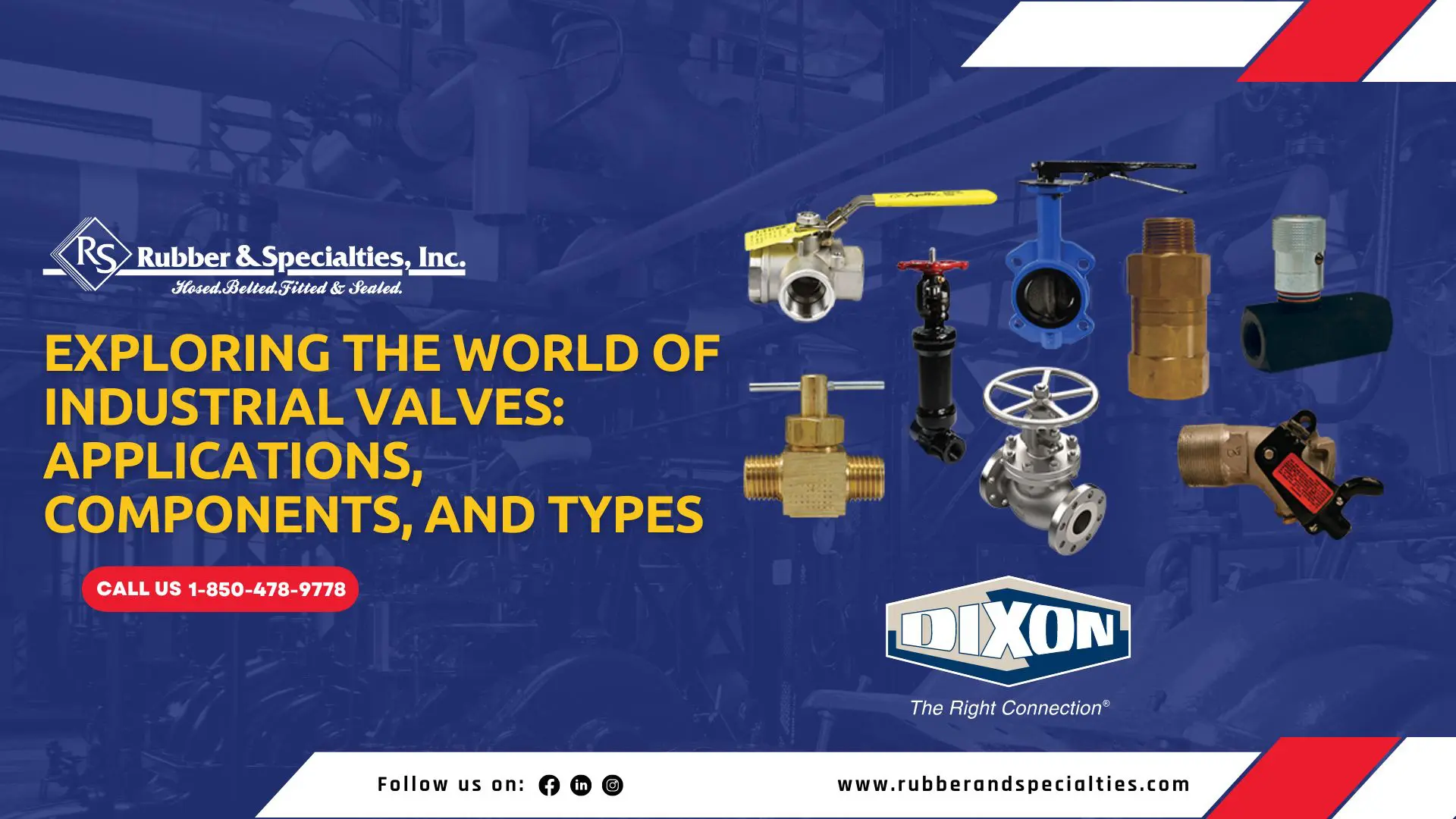
Exploring the World of Industrial Valves: Applications, Components, and Types
From oil refineries and water treatment plants to manufacturing and power generation, industrial valves play a crucial role in controlling the flow of liquids and gases. Let’s explore the world of industrial valves and how they ensure efficiency, safety, and functionality across a variety of industries.
Industrial Valve Applications
A valve is a device for controlling the passage of fluid through a pipe or duct allowing movement in one direction. Industrial valves are beneficial in a multitude of sectors, including drinking water processing, wastewater processing, power generation, manufacturing, chemical processing, petrochemical processing, fire suppression, washdown, biopharmaceutical applications, and food and beverage manufacturing.
Industrial Valve Components
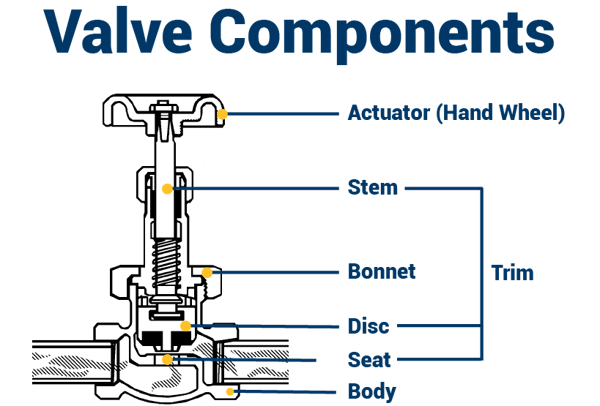
Most industrial valves have parts that share common duties. These components include the actuator, body, bonnet, trim, stem, and obturator.
An actuator provides the force to open and close the valve. Actuators can be manual, pneumatic, or electric. Read The Art of Actuation to learn more.
The outer casing of the valve is the body. It provides structural support and houses the internal components.
The valve bonnet is the top portion that houses the stem and other internal components.
The trim is the term used to describe all the internal elements of the valve that come into contact with the media being controlled. This includes the obturator, seat, and stem. The seat and disc are the primary sealing mechanism of the valve. The obturator is the generic term for the ball, wedge, or disc depending on the type of valve. In the graphic above, the disc is attached to the stem and moves to block or allow flow. It presses against the seat to form a tight seal. The stem connects the actuator to the disc to transmit the actuator’s motion, causing the valve to open or close.
Types of Industrial Valves
There are numerous types of valves for industrial applications including ball, butterfly, check, control, drum gate, gate, globe, and needle valves.
Ball valves can be used for on-and-off service or throttling and are used when positive shut-off is necessary. Most ball valves are a quick-acting type which require a 90° turn of the valve handle. A ball with a hole in it is used to start or stop the flow. Ball valves are smaller and lighter than gate valves of the same size and rating. Full, standard, and reduced port options are available for various flow requirements.
Butterfly valves are used to start, stop, and regulate flow. They offer a compact, lightweight design suitable for large valve applications. Butterfly valves are easy and fast to open, requiring a 90° rotation of the handle for complete opening or closure. Butterfly valves possess many advantages over other industrial valves, especially for large valve applications. Savings in weight, space, and cost are the most obvious advantages. Maintenance of butterfly valves is easy and affordable because they have minimal moving parts and no pockets to trap fluids.
Check valves are used to prevent backflow in a piping system. The pressure of fluid opens the valve, and any reversal of flow closes the valve. Check valves should not be used in a rapid recycling system such as reciprocating pumps or air compressor service where they could cause chatter and damaging vibration. Dixon offers industrial and sanitary check valves depending on the application.
Control valves are used to reduce the rate of flow. Flow is controlled in one direction and free flow is allowed in the other direction. The finely threaded stem provides fine adjustments.
Also called drum faucets, drum gate valves are ideal for drawing non-flammable liquids from drums and tanks. Dixon offers drum gate valves in 3/4” and 2” sizes in iron or aluminum.
Gate valves are the most common type of valve in any process plant. The valve opens by lifting a barrier, the gate, out of the path of the fluid to start or stop fluid flow. Gate valves should not be used for control or throttling. They are designed for minimum line pressure drop, minimum fluid entrapment in the line, and relatively infrequent operation.
Globe valves are used to start, stop, and regulate flow in a piping system where flow control and leak tightness are required. Applications for globe valves include cooling water systems, feed water for chemical processes, boiler water inlets and drain systems, and water supply lines for fire suppression. Bronze globe valves are most common in industrial applications, while forged steel globe valves are utilized in higher-pressure applications.
Similar to control valves, needle valves are used for finer control of pressure. However, whereas control valves only control flow in one direction, needle valves can control flow in both directions. Needle valves are used for air and water applications, compressed gases, and chemical processing. The metal-to-metal seats allow positive sealing and flow adjustment.
Dixon Industrial Valves
Dixon offers a wide variety of industrial valves to ensure you always have The Right Connection®.

Features
- Blowout-proof stems
- Full and standard port valves are repairable
Specification
- Pressure rating: 600 PSI cold working pressure (CWP); 150 PSI saturated steam
“Deadman” Spring Return Ball Valve: Brass and Stainless Steel

Features
- Blow-out proof stem design
- Adjustable packing gland
- Spring return closes valve when not held open
Specifications
- Operating torque approximately three times standard valve torque
- Brass pressure rating:
- 600 PSI CWP
- 150 PSI saturated steam
- Stainless steel pressure rating:
- 2000 PSI for control of air, water, oil, and gas (WOG) 1/2” – 1”
- 1500 PSI WOG 1-1/4” – 2”
- 150 PSI saturated steam, all sizes
Dixon Boss® LPS Butterfly Valves
Features
- Locator notches around the outer edge of the body allow the valve to easily line up at center
- Actuator mounting flange outfitted with both industry standard and ISO bolt circle diameters
- Thicker stems deliver a more durable and reliable performance
- Grease zerk added to body neck for reliable performance
- 10-position throttling handle for controlled accuracy
- For use between lightweight flanges: 125 lb., 150 lb., or butterfly valve flange
Specifications
- Maximum working pressure: 4” and 5” – 200 PSI; 8” – 175 PSI
- Temperature range: Nitrile rubber seat -20°F to 200°F (-28°C to 93°C); FKM seat 0°F to 200°F (-17°C to 93°C)

Features
- Will lock “open” or “closed”
- For use between two 150 lb. flanges
- Number of holes on the valve depends on the body size
Specification
- Pressure rating: 200 PSI at 70°F (21°C)
800 PSI Stainless Steel Check Valve

Features
- Soft PTFE seat is spring-loaded for fast seating action
- Flow profile designed to minimize head loss
- Corrosion resistance, excellent for use with chemicals
- Dual-guided stem and disc
Specifications
- Temperature range: 10°F to 450°F (-12°C to 232°C)
- Pressure rating: 800 PSI WOG; 125 PSI saturated steam
- Cracking pressure: .5 PSI
Features
- High-flow valve provides optimum performance
- Controls excess air flow (SCFM) in only one direction
- Automatically senses a change in air flow and shuts off the flow in the event of a surge in excess of valve flow rating thus preventing hose whip
- Does not prevent backflow
Specifications
- Conforms to OSHA regulation 1926.302 (B) (7) requiring a safety device at the source of the air supply and branch air lines
- Maximum operating pressure: 350 PSI
- Maximum temperature: 250°F (121°C)
Features
- Two-step needle provides fine adjustments at low flow with the first three turns of the adjusting knob, the next three turns give full-open needle position and conventional throttling control. When flow is reversed, a heavy-duty poppet/retainer permits full-flow return capacity
- Color-coded reference scale simplifies flow setting, resetting, adjusting, and returning to the original flow; a simple set screw locks the valve on any desired setting
Specifications
- Steel maximum operating pressure:
- 1/8” – 1/2”: 5000 PSI at 70°F (21°C)
- 3/4” – 2”: 3000 PSI at 70°F (21°C)
- Brass maximum operating pressure
- 1/8” – 3/4”: 2000 PSI at 70°F (21°C)
- 1”: 500 PSI at 70°F (21°C)
Series-MV Metering Flow Control Valve

Features
- Easily make fine adjustments and reset with color code feature that shows when the desired setting is reached
- Body components are precision-turned from solid bar stock
Specification
- Maximum operating pressure: 5000 PSI at 70°F (21°C)
Features
- Lightweight, durable aluminum body provides improved corrosion resistance for certain fluids
- Sturdy 2” handle is stamped metal with a black enamel finish
- Can be padlocked

Features
- Manually operated
- Machined and lapped brass faceplate designed for oval discharge, ensures no splashing and a smooth operation
- Can be padlocked
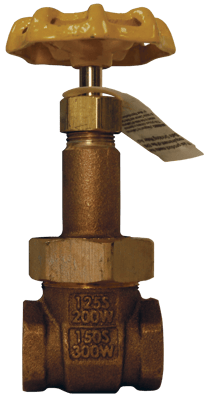
Features
- Class 150
- Union bonnet
- ASME B1.20.1
- Grafoil® packing
- Rising stem
- Solid disc
Specifications
- Temperature range: -20°F to 406°F (-29°C to 208°C)
- Pressure rating: 300 PSI CWP, 150 PSI steam working pressure
Features
- Bolted bonnet
- Classes: 150, 300, and 600
- MTRs available
Specifications
- End configuration: raised face (RF) or buttweld (BW) schedule 40 (300/600)
- Basic design: API 600
- ASME B16.5
- Butt weld: ASME B16.25
- Face to face: ASME B16.10

Features
- ASTM A105, ANSI B120.1
- Bolted bonnet
Specifications
- Class 800
- Pressure rating: 1975 PSI
- Maximum temperature: 800°F (427°C)
Bellows Sealed Globe Valve – J-Series
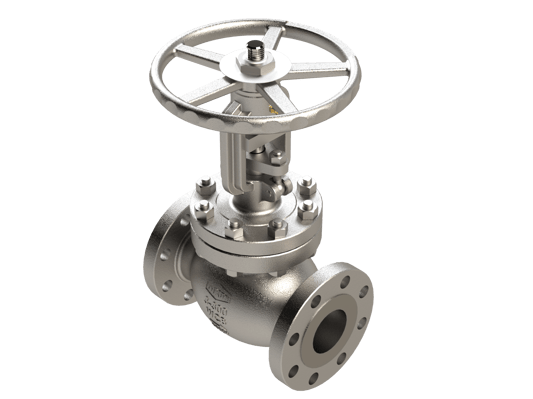
Features
- Bolted bonnet
- Classes: 150, 300, and 600
Specifications
- End configuration: raised face (RF) or butt weld (BW) schedule 40
- Basic design: ASME B16.34
- End flange: ASME B16.5
- Butt weld: ASME B16.25
- Face to face: ASME B16.10
- Bellows: MSS SP-117
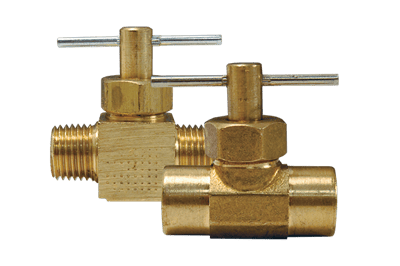
Features
- Metal-to-metal seats allow positive sealing and flow adjustment
- Designed for air and water applications
Specification
- Maximum working pressure: 150 PSI at 70°F (21°C)

Features
- FKM O-ring seal and PTFE backup ring below the threads protects from corrosion and galling
- Stem threads are rolled for strength and ease of operation
- 0.090” bleed hole located on the bottom is controlled by a 1/4”-20 UNF-2A bleed screw
Specifications
- Metal-to-metal hard seat design is 100% helium leak tested to 1 x 10-4 ml/s at 200 PSI
- Orifice size is 0.187”, flow coefficient: 0.44
The products listed above are just a small sampling of Dixon’s industrial valves. View our full offering on our website.
Summary
Industrial valves may not always be in the spotlight, but their significance cannot be overstated. From regulating flow rates in chemical processing plants to ensuring safe drinking water in municipal systems, industrial valves are imperative for the function of countless industrial processes.
Dixon is delighted to provide sanitary and industrial valves for a variety of industries and applications. For more information, visit dixonvalve.com or call 877.963.4966 for recommendations on your specific application.





